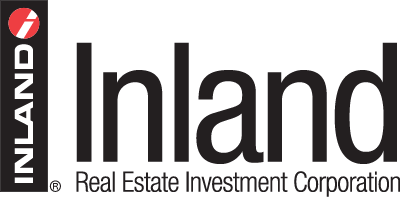As an investment advisor, you understand that the real estate market offers a wealth of opportunities. However, serving the real estate needs of your clients today goes beyond simply identifying promising properties. It requires a deep understanding of the various investment structures available, each tailored to different investor objectives and risk profiles.
In this article, we will explore five primary real estate investment structures that you can leverage to fulfill the income and investment goals of your clients.
You Have Options
DST via 1031 Exchanges:
-
Potential Benefits: Delaware statutory trust (DST) via 1031 exchanges offer a tax-advantaged way to defer capital gains taxes when selling investment property and reinvesting in another like-kind property. The DST allows for diversification without direct property management responsibilities, and a range of other potential benefits including:
-
Access to institutional quality properties
-
Professional management
-
Limited personal liability
-
Estate planning benefits
-
-
Typical Investment Goal: Investor seeking tax deferral and diversification without active management responsibilities.
QOZ Funds:
-
Potential Benefits: Qualified Opportunity Zone (QOZ) funds provide substantial tax incentives for investing in designated economically distressed areas. They offer capital gains tax deferment and potential for complete tax-elimination when holding the investment for 10 years or more. QOZ funds also allow investors to defer capital gains on virtually any type of asset including stocks, cars, art, jewelry, etc. – not just real estate.
-
Typical Investment Goal: Investors with capital gains looking for tax benefits and who are interested in supporting community development.
REITs:
-
Potential Benefits: Real Estate Investment Trusts (REITs) provide liquidity, diversification, and access to a wide range of real estate sectors.
-
Typical Investment Goal: Income-focused investors who want exposure to a larger real estate portfolio that may also afford investors greater liquidity opportunities than typically offered by private funds.
721 Exchanges (UPREITs):
-
Potential Benefits: 721 exchange/UPREIT transactions allow property owners to exchange real estate for ownership in the operating partnership of a REIT without immediate tax consequences.
-
Typical Investment Goal: Property owners looking to diversify holdings without triggering immediate capital gains taxes.
Development & Redevelopment LLCs:
-
Potential Benefits: Development and redevelopment LLCs are often the structures of choice for investors interested in participating in more opportunistic projects. They offer the potential for higher returns but come with higher risk.
-
Typical Investment Goal: Investors seeking higher returns and are comfortable with higher risk in exchange for potential upside.
Advantages for You
As an investment advisor, having a comprehensive understanding of these real estate structures offers a few key advantages:
- Ability to Offer a Menu of Strategies: By incorporating these structures into your offerings, you can provide your clients with a diversified range of investment options. This flexibility ensures that you can tailor investment strategies to meet the specific objectives and risk tolerance of each client.
- Reinforces Confidence: Demonstrating your expertise in these various structures enhances your credibility as a financial professional. Clients are more likely to trust your advice and recommendations when they see your breadth of knowledge in action.
- Sets Your Practice Apart: Expertise in real estate investments requires a significant investment of your time. However, few advisors have a deep understanding of real estate, which creates an opportunity for you to differentiate your practice from others and attract the high net-worth prospects who are most likely to have an interest in private real estate investments.
Incorporating a variety of real estate investment structures into your advisory practice is a wise move in today's market. Your ability to align investments with your clients' unique objectives and risk profiles will distinguish you as a trusted advisor.
Whether it's deferring taxes through DST 1031 exchanges or supporting community development with QOZ investments, these structures offer powerful tools to enhance your clients' portfolios, while growing your AUM.
To explore real estate investment structures, visit our Marketplace at The Inland Academy, specifically designed for investment advisors like you.
Disclosures
Some of the risks related to investing in commercial real estate include, but are not limited to: market risks such as local property supply and demand conditions; tenants’ inability to pay rent; tenant turnover; inflation and other increases in operating costs; adverse changes in laws and regulations; relative illiquidity of real estate investments; changing market demographics; acts of God such as earthquakes, floods or other uninsured losses; interest rate fluctuations; and availability of financing. This communication is not intended as tax advice.
